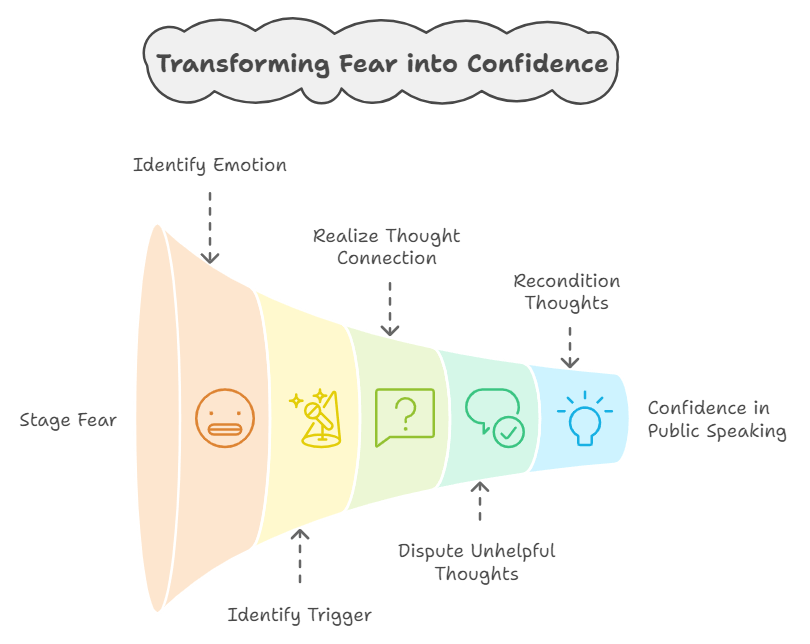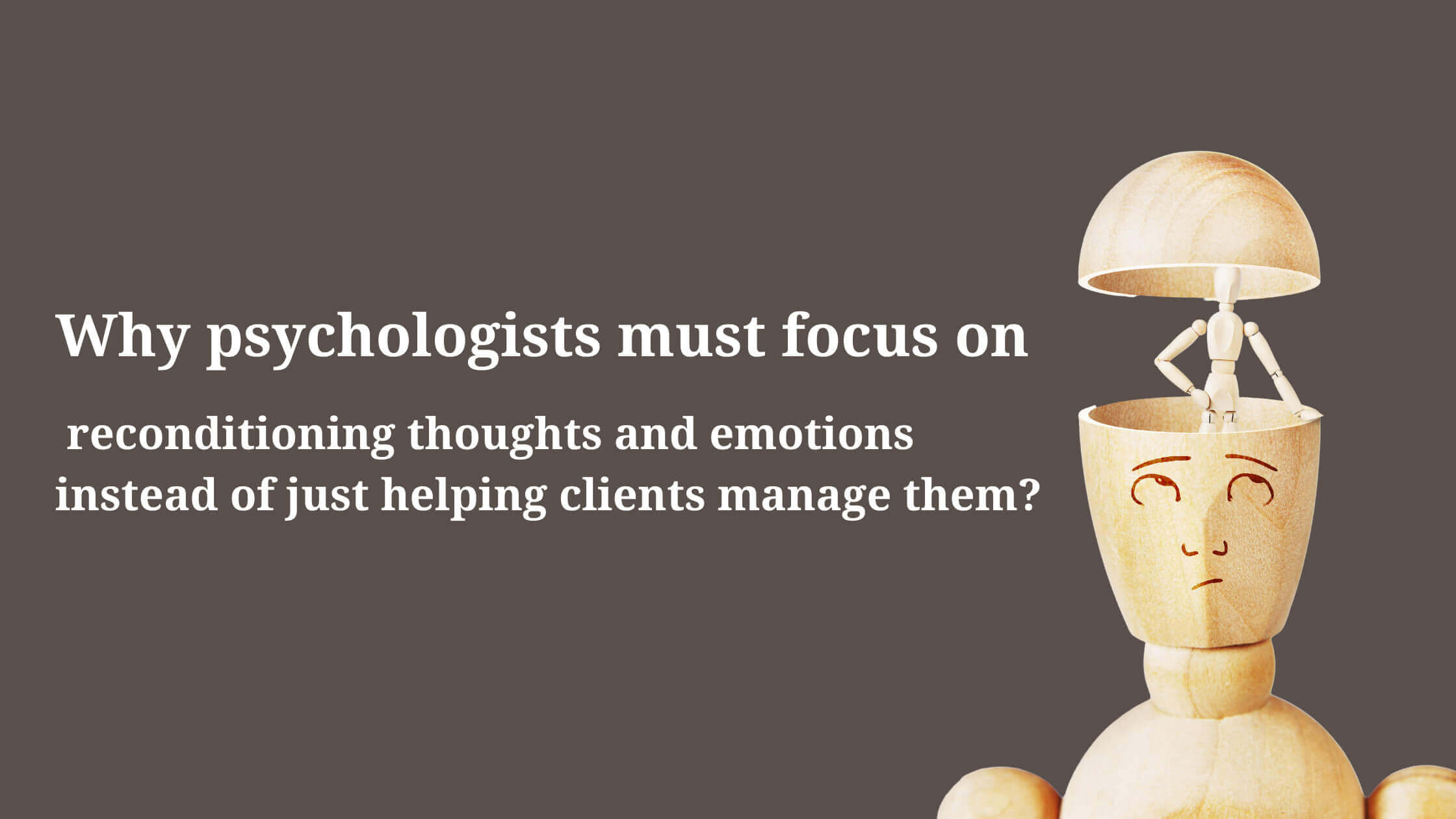One of the primary concerns that clients have when they visit a psychologist is that they are struggling because of some thoughts and emotions that they are neither able to control nor able to handle.
So the primary role of any psychologist is to help the client manage their thoughts and emotions. The difference between any psychologist and a transformational psychologist is that the transformational psychologist would not just help the client manage their thoughts and emotions but actually help them recondition the same.
You may be wondering what is the difference between managing thoughts and emotions and reconditioning them? That is exactly what we have focused on in this video and blog.
Difference between managing and reconditioning thoughts and emotions

Let us say a client is struggling with stage fear. As a result of the stage fear, every time the client has to speak on a stage in front of a large audience he/she would request someone else to do so. The client was able to get away with this till now because of the nature of their work.
Now the client is due for a promotion. A promotion that can really help the client become a part of the big league. The client really wants to accept the promotion but one of the key responsibilities after the promotion is to represent the company at various events that the company participates in.
This would require the client to speak on a stage very frequently. This means their options going forward is to overcome this stage fear or give up on the promotion and the client doesn’t want to give up the promotion.
So when the client seeks help from a psychologist, the psychologist will help the client overcome this fear. Let us look at the steps that most psychologists will take to help clients do so.
- First step is to help the client identify the emotion that the client is experiencing. In this case, the emotion is Fear
- Second step is to the client identify the trigger, as in what triggers this emotion. In the current case, it is lets say… Stage
- Thrid step is to help the client realise that it is not the stage that is directly triggering the fear but that the stage triggers a thought, a thought like people will laugh at me and it is the thought that triggers the fear. Once the client realises this connection between thoughts and emotions….
- The next step is to help the client identify the specific thoughts that the client has that lead to the emotion. Once the client identifies the unhelpful thought,
- the next step is to help the client learn how they can dispute their these unhelpful thoughts and rationalize with the help of more helpful thoughts.
So in the current case, since the unhelpful thought is that people will laugh at me, the psychologist can help the client dispute the thought by asking how do I know and follow it up with a more helpful thought like I will only know once I speak.
This means the next time the client has to speak on stage, the conversation that takes place in the client’s mind is people will laugh at me… but I don’t know that really… I will only know what will be peoples reaction after I speak.

As a result of this new conversation, the client may no longer be afraid of speaking on stage. They may not still feel completely confident but hopefully, the fear will no longer stop them from speaking on stage.
This is a good example of managing thoughts and emotions. The existing thoughts and emotions are still present but we have helped the client reduce their impact by disputing the existing thought.

So what would a transformational psychologist do instead?
You guessed it right, a transformational psychologist would focus on helping client recondition their thoughts and emotions. What does reconditioning thoughts mean and how is it different from managing thoughts and emotions?
So from the example above we know that when it comes to managing, existing thoughts and emotions are still present, we are just helping the client reduce the impact of these thoughts and emotions by disputing the existing thoughts, and also we are not working on the emotion directly but only via thoughts.
But what if we could help the client completely change their thought pattern, i.e. when the client sees a stage their first thought is I have prepared well, so let me have some fun.

Notice how we are not talking about having an unhelpful thought and then disputing it but replacing the unhelpful thought with the helpful thought completely. That would be amazing wouldn’t it be?
And what if I said we could also directly work with the emotion and help the client replace this fear with calmness, confidence, or any other emotion that the client found more helpful.
This is what reconditioning thoughts and emotions really means.
If you are wondering how?
This and a lot more is what you will learn during the Cognitive Hypnotic Coaching Certification.

